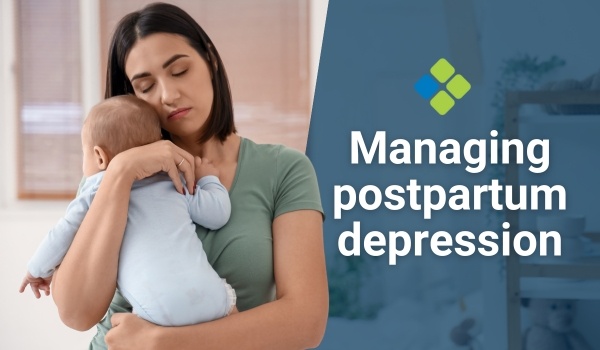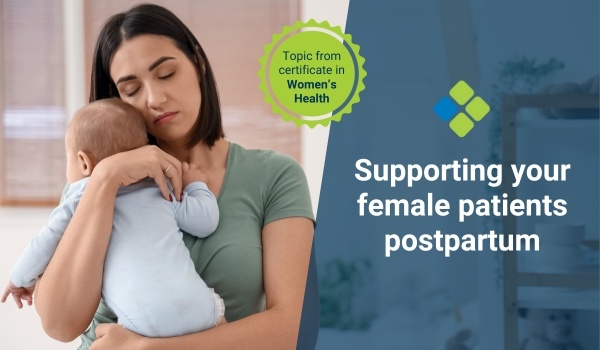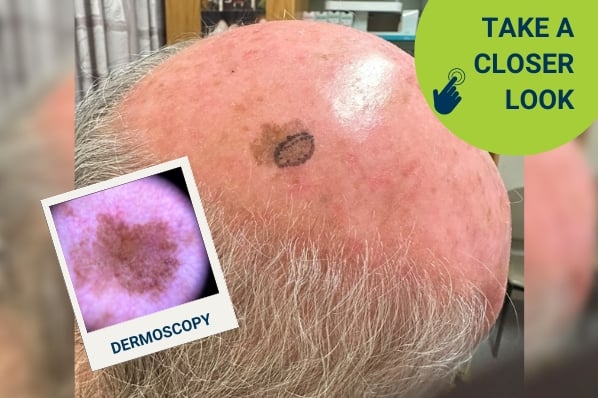Managing postpartum depression
Read more about the screening, clinical diagnosis, and treatment of postpartum depression in women's health.

HealthCert Education
Mood changes in the postpartum period are extremely common, ranging from mild and transient “baby blues” to severe and debilitating postnatal depression (PND). GPs typically see most new mothers within the first few weeks or months after childbirth, placing them in a unique position to identify and manage early signs of PND.
The baby blues, which often manifest as tearfulness, irritability, and fatigue, affect up to 80 per cent of new mothers in the first two weeks after giving birth. In contrast, PND is estimated to affect 10–20 per cent of new mothers and is defined as a depressive episode occurring within 6–12 months of delivery.
Screening for postpartum depression
Simple yet direct questions about mood, hopelessness, or lack of interest in regular activities can effectively determine the need for additional screening.
First-time mothers and those with a known history of mental health conditions also may warrant proactive screening. Other risk factors for PND include recent stressful life events, lack of social support, and previous trauma.
Several formal screening tools are available to facilitate detection, with the Edinburgh Postnatal Depression Scale (EPDS) being one of the most widely recognised and validated.
Clinical presentation of postpartum depression
Clinical presentations of PND encompass a wide spectrum of symptoms. Common indicators such as low mood, persistent sadness, negative thoughts, and tearfulness may be readily apparent. However, less obvious signs such as sleep disturbance, reduced libido, or physical complaints such as palpitations should also prompt screening for PND.
A diagnosis of PND is made clinically and can be classified as mild, moderate, or severe based on the number and intensity of symptoms and degree of functional impairment. Prompt psychiatric evaluation is warranted if there is any suggestion of self-harm, potential harm to the infant, or any indication of postnatal psychosis.
Management of postpartum depression
Management strategies depend on the severity of symptoms and the woman’s preference. These may range from “watchful waiting” in mild cases to more proactive interventions for moderate or severe depression.
Self-help approaches include encouraging new mothers to maintain communication with supportive friends or family, setting aside personal time, and adopting healthy lifestyle habits such as sufficient sleep and balanced nutrition.
Psychological therapies (for example, cognitive behavioural therapy (CBT) and interpersonal therapy (IPT)), are effective treatments and may be used alone or in conjunction with medication. Non-profit organisations, such as Perinatal Anxiety & Depression Australia (PANDA), also provide invaluable support through free helplines staffed by trained counsellors and volunteers.
Pharmacotherapy, often with selective serotonin reuptake inhibitors (SSRIs), is generally recommended when psychological therapies have not been successful, are unavailable, or in more severe cases.
Any treatment should be combined with regular follow-up to monitor symptoms and evaluate potential side effects. Postnatal depression typically lasts 3 to 6 months but can persist for longer, and continuation of medical therapies is recommended for at least 6 to 12 months after remission of symptoms.
Ultimately, postnatal depression is common and treatable. A proactive approach integrating early screening, patient-centred intervention, and ongoing support can significantly reduce the burden of PND on affected mothers and their families, ensuring a healthy start to parenthood and beyond.
Dr Samantha Miller, MBChB
Learn more about this topic in the HealthCert online Professional Diploma program in Women's Health
Read more articles like this one on prevalent topics in Women's Health.
How to claim CPD hours:
 Engaging with this blog can help meet your annual Education Activities CPD requirement! If you consume educational webinars, podcasts, articles, or research on this blog, you can Quick Log CPD hours with the RACGP via the usual self-submission process. You will be asked to reflect on what you have learned, and you will require supporting evidence such as a screenshot.
Engaging with this blog can help meet your annual Education Activities CPD requirement! If you consume educational webinars, podcasts, articles, or research on this blog, you can Quick Log CPD hours with the RACGP via the usual self-submission process. You will be asked to reflect on what you have learned, and you will require supporting evidence such as a screenshot.
Download the RACGP’s guide to self-recording your CPD here.
BMJ Best Practice (2024). Postnatal Depression. https://bestpractice.bmj.com/topics/en-gb/512
National Institute for Clinical Excellence (NICE). Clinical Knowledge Summary (CKS)(2023). Depression – Antenatal and Postnatal. https://cks.nice.org.uk/topics/depression-antenatal-postnatal/
Australian Family Physician (2005). Recognition and management of perinatal depression in general practice. https://www.racgp.org.au/getattachment/0d064013-fa24-46ad-bce2-64140b02ad09/200509buist.pdf
NHS (2022). Overview - Postnatal depression. https://www.nhs.uk/mental-health/conditions/post-natal-depression/overview/
Victoria State Government Department of Health. Postnatal Depression (PND). https://www.betterhealth.vic.gov.au/health/healthyliving/postnatal-depression-pnd
Centre of Perinatal Excellence. Postnatal Depression. https://www.cope.org.au/new-parents/postnatal-mental-health-conditions/postnatal-depression/

 1800 867 1390
1800 867 1390






